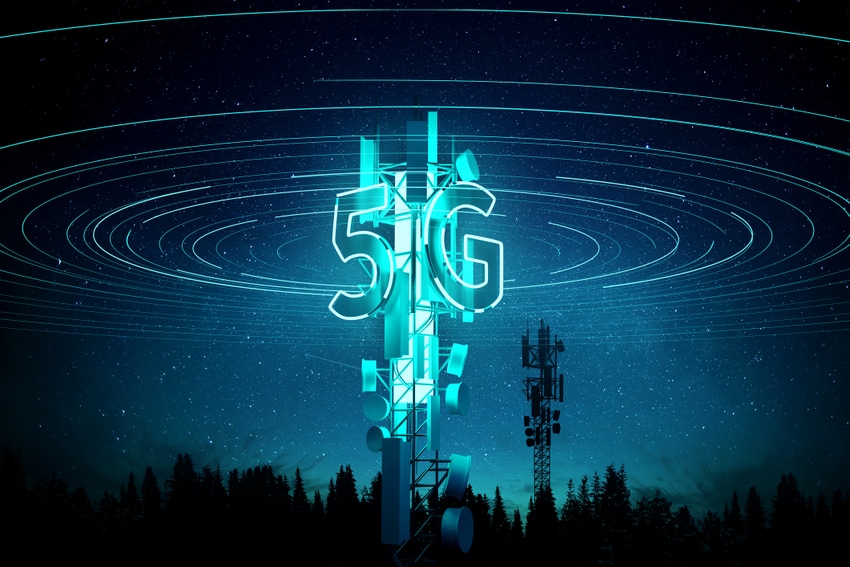Telecoms.com periodically invites expert third parties to share their views on the industry’s most pressing issues. In this piece Ari Kynäslahti, Head of Strategy and Technology at Nokia, discusses the benefits of 5G-Advanced.
February 6, 2023

Telecoms.com periodically invites expert third parties to share their views on the industry’s most pressing issues. In this piece Ari Kynäslahti, Head of Strategy and Technology at Nokia, discusses the benefits of 5G-Advanced.
5G is forecasted to reach 692 million subscribers globally by the end of 2023 and currently covers a fifth of the global population. In some markets such as Hong Kong, Kuwait, South Korea and the US, 5G covers an impressive 80 per cent or more of the population. Even in its early stages, the pace of its rollout had surpassed 4G/LTE networks. Despite all this tremendous progress, we are only at the beginning of the journey and 5G still has much-unrealized potential.
The standards body, 3GPP, first standardized the world’s first 5G New Radio solution in its ‘Release 15’ which introduced a new cellular system to help developers implement new functionality into the network. It then followed with Releases 16 and 17 which introduced enhancements for Industrial IoT (IIoT) including innovations to support time-sensitive communication (TSC), and the wider expansion of the 5G ecosystem, enhanced MIMO, small data transmission (SDT), User Equipment energy-saving, and many more enhancements. This also led to innovation in areas such as slicing, edge computing and basic support for Non-Terrestrial Networks (NTN). In 2024, 3GPP will launch Release 18 which will set us on the path towards the 5G-Advanced Era, followed by Release 19 and 20 in 2025/6 which will begin to lay the foundations for 6G. 5G-Advanced is the combination of all of this progress that will see continual improvements throughout the decade.
What is 5G-Advanced?
5G-Advanced is the second phase of the traditional 5G era; it is set to evolve the 5G system to its fullest, richest capabilities.
Expected to be commercially available in 2025, it will provide a strong foundation for more demanding applications including a truly mobile extended reality (XR) service, high-precision location presence, and timing technologies. 5G-Advanced capabilities will inject more intelligence into networks boosting fundamental radio and system performance and introducing AI/ML technologies across the RAN, core, and management network domains to achieve operational excellence. Energy efficiency will be central to 5G-Advanced, both in maximizing device battery life and in reducing network power consumption.
Additionally, 5G-Advanced will be fully backwards compatible, meaning it can co-exist with the 5G NR Releases 15-17, as well as serve legacy 5G devices.
Categorizing the features
At Nokia, we think of 5G-Advanced as more than a list of enhancements and features, but as a means for service providers to transform their networks in profound ways. We can break down the key attributes in the following ways.
Boosted 5G Experience: 5G-Advanced will offer an improved experience for people and machines. This cluster of features focuses on improving throughput in the uplink, reducing service interruption time, and enabling superior digital experiences. 5G-Advanced will grant access to immersive experiences through the use of XR (VR and AR).
Boosted 5G operability: 5G-Advanced will be powered by operational excellence that aims to enhance and optimize the 5G platform and its operation by the gradual introduction of AI/ML enablers, wireline and wireless convergence, improved resiliency, and energy efficiency enhancements. These operational enhancements will ensure efficient network operation at an affordable operational expense.
Boosted 5G services usage: 5G-Advanced will extend the reach of connectivity and make it available to new market segments; including innovations for improved coverage, enhanced low-cost massive IoT, and further support for non-terrestrial networks (NTN) such as Space-Air-Ground networks and UAVs (Uncrewed Aerial Vehicle) as well as drones. This will help bridge the digital divide by extending broadband connectivity into rural and underserved geographies offering people access to economic opportunities and the benefits mobile connectivity provides. It will also be fundamental to the operation of driverless cars, autonomous robots, and industrial automation systems.
Through using these categories, we can curate unique combinations of 5G-Advanced enhancement to produce the bespoke services customer’s desire. While one customer may require only the most rudimentary 5G capabilities, another may need to boost the experimental aspects of its networks by implementing XR or a customer may want to extend their sector with drone support and 5G satellite connectivity.
A future with 5G-Advanced will transform the user experience in previously unimaginable ways. It will grant us access to highly immersive new worlds as well as improve the mobile experience. It will deliver more intelligence into the network using AI and ML and adapt to the environment, boosting performance and bringing mobile broadband speeds to a host of new devices. Lastly, it will improve coverage and capacity, enhance the end-user experience and expand 5G capabilities beyond connectivity.
 Ari Kynäslahti has had a long career working at Nokia, starting his journey with the company in early 1995. In Nokia and Nokia Siemens Networks he has worked in many managerial positions including Head of Mobile Networks and Product Management, Head of LTE Product Management, Head of Global Radio Sales and Head of WCDMA Product Management as well as multiple positions in R&D and Business Development.
Ari Kynäslahti has had a long career working at Nokia, starting his journey with the company in early 1995. In Nokia and Nokia Siemens Networks he has worked in many managerial positions including Head of Mobile Networks and Product Management, Head of LTE Product Management, Head of Global Radio Sales and Head of WCDMA Product Management as well as multiple positions in R&D and Business Development.
In his current position as the Head of Strategy & Technology, CTO he is responsible for creating business, technology and partnership strategies for MN and contributing to Nokia-level strategy. He is also responsible for MN level portfolio and investment management as well as roadmaps and product decisions for MN SoC:s, BTS platform including RF platforms and baseband platforms and to define and maintain the product leadership plans in RF, BB, automation, AI/ML, ORAN/vRAN architecture and Private Wireless Networks.
In addition to these, in his current position he is managing the co-operation with key interface partners, i.e. R&D, sales, standardization, research, chipset vendors and device vendors. Mr Kynäslahti has a MSc in Radio Technology with two minors: Corporate Strategy & international business and Economy from Helsinki University of Technology.
Get the latest news straight to your inbox. Register for the Telecoms.com newsletter here.
Read more about:
DiscussionAbout the Author(s)
You May Also Like








.png?width=300&auto=webp&quality=80&disable=upscale)


_1.jpg?width=300&auto=webp&quality=80&disable=upscale)


.png?width=800&auto=webp&quality=80&disable=upscale)